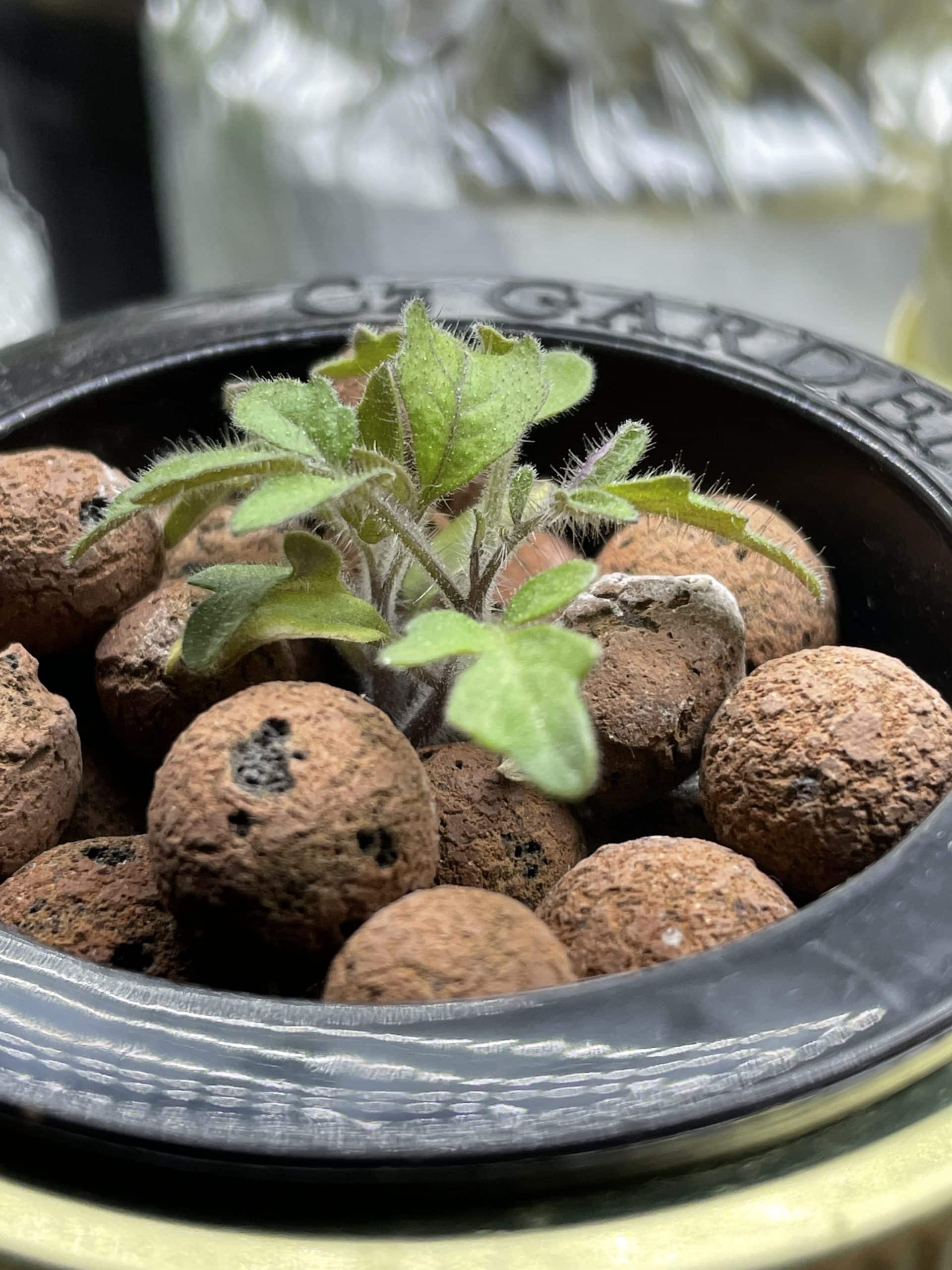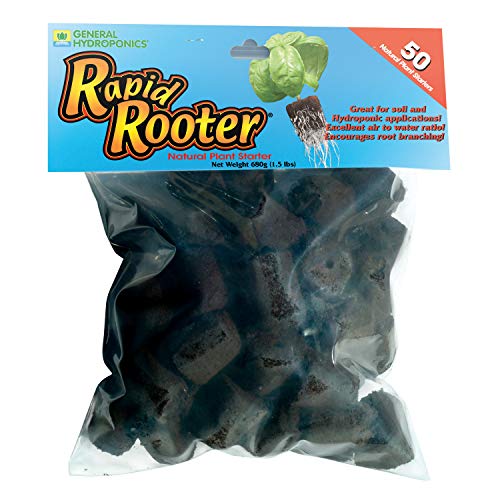Hydroponic Growing Mediums
Hydroponic growing mediums are materials that support the root system of plants in hydroponic systems, providing physical support without the use of soil. They are designed to retain moisture and air, allowing for efficient nutrient uptake through the water solution. Common types of hydroponic growing mediums include:
Rockwool
Made from molten rock spun into fibers, it retains water well and provides good aeration.
Clay Pebbles
Lightweight, porous, and made from expanded clay, offering excellent drainage and aeration.
Perlite
Volcanic glass that has been heated and expanded, it’s lightweight and improves drainage and aeration.
Vermiculite
A mineral that expands when heated, it retains more water than perlite but provides less aeration.
Coconut Coir
Made from the husk of coconuts, it retains water well and is renewable, but it can degrade over time.
Peat Moss
Sphagnum moss that retains moisture effectively, though it is less sustainable and can compact over time.
Foam
Specifically designed foam mediums that offer excellent root support and aeration.
Pumice
A type of volcanic rock that is lightweight and porous, providing excellent drainage and aeration to the root system.
Each growing medium has its own set of properties that make it suitable for different types of hydroponic systems and plants. What you grow your plants in can impact the entire growing process. Select growing mediums that help your plants thrive.
Rockwool – Hugely Popular Growing Medium for Hydroponics
Rockwool is a hydroponic growing medium made from molten basalt rock and chalk, which are spun into fine fibers and then formed into various shapes and sizes such as cubes, blocks, and slabs. Here are specific details about Rockwool:
- Composition: It is composed mainly of basalt rock and limestone that are melted at high temperatures (about 1,600°C) and then spun into fibers, resembling wool, hence the name Rockwool.
- pH Neutral: Rockwool is generally pH neutral (around 7.0) when produced, but it may require conditioning or soaking in a pH-adjusted solution before use to ensure it does not alter the pH balance of the nutrient solution.
- Water Retention and Aeration: It has a high water retention capacity while still providing excellent aeration to the root zone. This balance supports the plant by providing enough moisture and oxygen to the roots.
- Sterile Medium: Rockwool is sterile, meaning it does not contain any pathogens, weeds, or seeds that could harm plants. This reduces the risk of diseases in the hydroponic system.
- Insulating Properties: Its insulating properties help to maintain a stable root zone temperature, which is beneficial for plant growth.
- Versatility: Suitable for various hydroponic systems and a wide range of plants, Rockwool can be used from seed starting to grow large plants, as it supports root development and stability.
- Sustainability Concerns: While effective, Rockwool is not biodegradable, raising concerns about environmental sustainability. Disposal of used Rockwool can be challenging, and it is often advised to reuse or recycle it where possible.
- Handling Precautions: When handling Rockwool, it is recommended to wear protective gear like masks and gloves. The fibers can be irritating to the skin, eyes, and respiratory system.
- Preparation for Use: Before planting, Rockwool often needs to be soaked in water or a nutrient solution to fully saturate it. This also helps to adjust the pH of the medium to be suitable for plant growth.
Rockwool’s properties of water retention, aeration, and sterility, combined with its versatility and insulation capabilities, make it a popular choice for hydroponic growers. However, its environmental impact and the need for careful handling are also important considerations.

ABOVE: You can see the rockwool in the jars with seedlings popping out of them.
BELOW: Our favorite brand of rockwool. These cubes are easy to use and packages separately.

ABOVE: Clay pebbles in a net pot holding a tiny micro hydroponic tomatoe plant in a Kratky mason jar.
BELOW: Our favorite clay pebbles we use with the Kratky method.
Clay Pebbles – An Essential Growing Medium
Clay pebbles, also known as LECA (Lightweight Expanded Clay Aggregate), are a popular hydroponic growing medium known for their versatility and efficiency in providing support and aeration to plant roots in various hydroponic systems. Here are specific details about clay pebbles:
- Manufacturing Process: Clay pebbles are made by heating natural clay at high temperatures (approximately 1100 to 1200°C) in a rotary kiln. This process causes the clay to expand and become porous, forming lightweight, round pellets that are hard on the outside and porous on the inside.
- Physical Properties: They are lightweight, with a smooth, dense outer shell and a porous interior. The pebbles are typically round or oval and range in size from 8 to 16 mm, though sizes can vary.
- pH Neutral: Generally, clay pebbles are pH neutral, which means they do not affect the pH balance of the nutrient solution significantly, making them suitable for various plants without the need for pH adjustment.
- Excellent Drainage and Aeration: Their shape and porosity allow for excellent drainage, reducing the risk of overwatering. The gaps between the pebbles provide good air circulation, delivering oxygen to the roots and facilitating healthy root development.
- Reusable and Durable: One of the advantages of clay pebbles is their durability and reusability. They can be cleaned, sterilized, and reused for multiple growing cycles, making them a cost-effective and environmentally friendly option.
- Insulating Properties: Clay pebbles can help insulate the root zone from extreme temperature fluctuations, contributing to a more stable growing environment.
- Versatility: Suitable for use in various hydroponic systems, including drip systems, ebb and flow (flood and drain), deep water culture (DWC), and aquaponics. They can also be used as a top layer in soil pots to retain moisture or reduce pests.
- Sustainability: While the manufacturing process requires significant energy, the long lifespan and reusability of clay pebbles can offset some environmental concerns. However, they are not biodegradable.
- Application: Clay pebbles are often used as the sole growing medium but can also be mixed with other mediums to improve structure and water retention. They’re particularly popular for growing plants that require good drainage and aeration, such as orchids, hydroponic vegetables, and herbs.
- Preparation Before Use: Before their first use, clay pebbles should be rinsed thoroughly to remove any dust and debris. Some growers also soak them in pH-adjusted water to ensure they are completely clean and ready for plant support.
Clay pebbles’ unique combination of durability, aeration, and drainage capabilities make them a preferred choice for many hydroponic and aquaponic gardeners seeking an efficient and sustainable growing medium.





